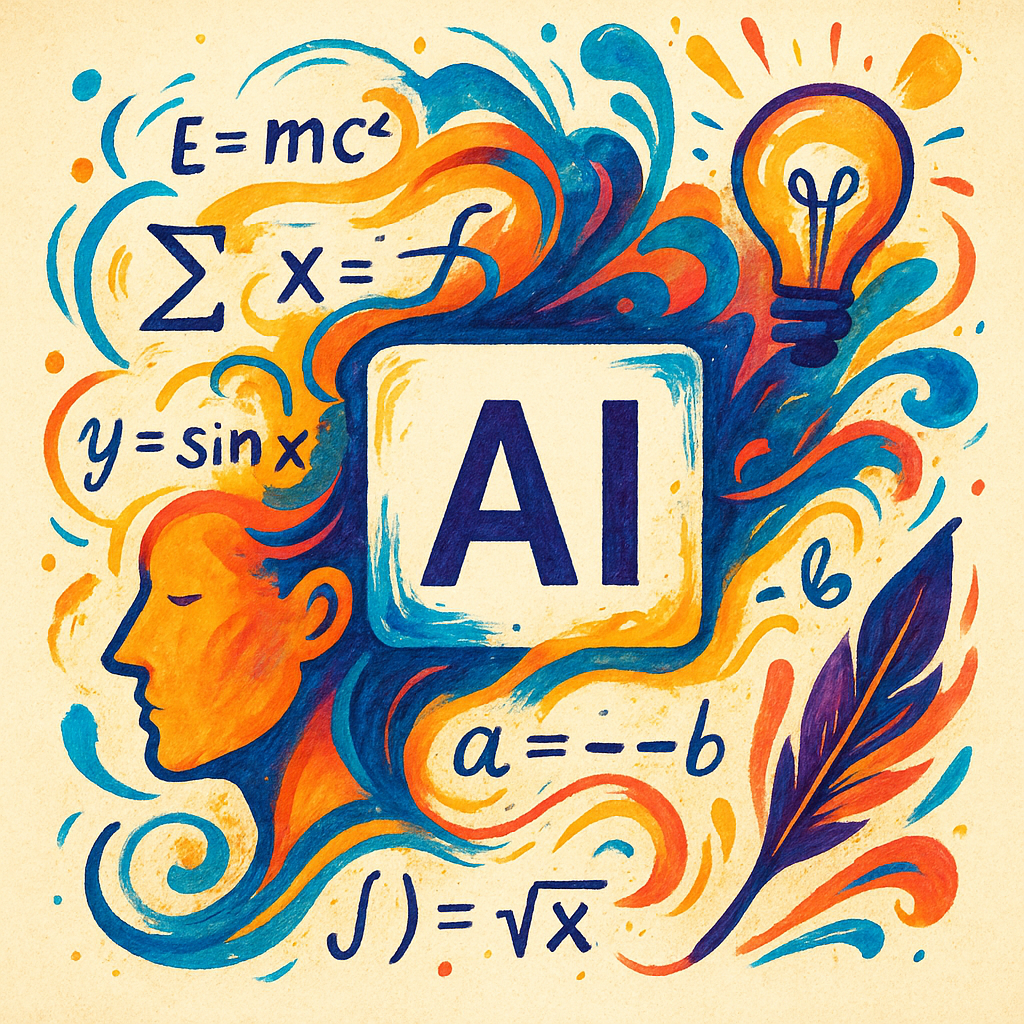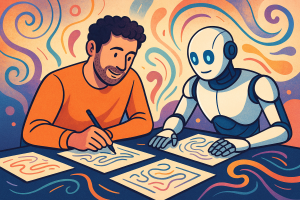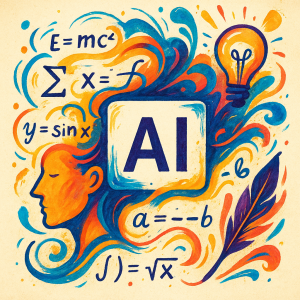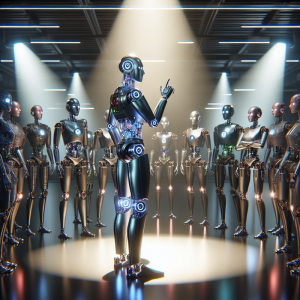Why AI Is More Than Just Numbers
Every problem in AI starts to look like math (to me anyway). That’s not a metaphor, it’s reality. Inputs, outputs, variables, constraints. You could say AI is nothing more than a math problem at scale (and you wouldn’t be entirely wrong). But here’s where people miss the point: if you only see it as numbers, you’re doomed.
Because AI isn’t just math. It’s art + science. It’s precision and creativity. It’s equations informed by context, judgment, and yes, intuition.
Here’s the kicker: when you treat thinking in AI like solving a complex equation, you start to realize the path matters as much as the answer. Each step has to be exact. GIGO is our codeword for Garbage In, Garbage Out. One sloppy assumption on the onramp and it’s garbage out the rest of the way. One narrow viewpoint? Wrong trajectory? Jobs was not around for this part but no, “thinking differently” doesn’t always yield genius, sometimes it just yields worse results.
The Trap of Oversimplifying AI
Too many companies still treat AI like plugging numbers into a calculator. They want the neat answer at the end without respecting the complexity of the problem itself. Worse, when they finally absorb the real problem, they shrink and run for the comfort of manually updating XLS files. It’s odd to me.
They’ll ask: “Can you just AI this?” as though it’s a one-click feature (we also saw this in the WordPress boom of the early 2000’s. “Just get a WP theme right? Um, no). But AI done right isn’t a “toggle.” It’s a carefully constructed equation where every term matters. Context matters. History matters. Human nuance matters. Not paradoxically to me, but confusing to a lot of clients, the more “human” you are, the easier this actually is.
Imagine trying to solve a massive equation with half the variables left blank. You can do it—but the answer will be nonsense. Imagine a MadLibs half filled out. It will read as *something* but won’t be very fun at all. That’s what happens when organizations slap AI on top of shallow data or vague goals. The math looks clean, the reality doesn’t.
We guide them in a better direction.
Solving Problems the Right Way
Here’s where we live: treating each AI implementation as a unique equation that needs to be solved from the ground up.
Not “plug in tool → get result.”
But: “Define the variables, understand the constraints, weight the factors, and solve for the outcome that actually matters.”
This is where art + science collide. The science is the math. The art is knowing which variables even belong in the equation.
Real-World Equations AI Can Solve
So what does “AI as an equation” look like in practice? A few examples:
-
Weighted decision-making in finance: A client’s model isn’t just predicting returns. It’s balancing dozens of constraints (risk tolerance, time horizons, regulatory friction). Each one is a variable in the equation. Get the math wrong, shareholders are, um, unhappy.
-
Personalized healthcare models: A treatment recommendation system can’t be “one-size-fits-all.” It has to treat each patient’s DNA, history, and lifestyle as unique variables. The math of one body ≠ the math of another. This is perhaps my most intriguing rabbit hole for AI. We talk a lot of this all over the place so we don’t have to dive in here too deep but health is perhaps the ultimate use case for AI.
-
Supply chain forecasting at scale: Every delay, weather event, and pricing swing is a term in the equation. Overweight one factor, you paralyze operations. Underweight another, you ship chaos to customers.
Notice the pattern? Each problem is individually unique—but the process of solving them is structurally the same. Just like math.
Short-Term Wins vs. Long-Term Vision
Short-term (1–3 years): Our job with clients is to bring this thinking to the table now. To help them stop chasing tools and start defining the variables of their real problems. Short-term wins come from building models that are as precise in their framing as they are in their math.
Long-term (5–10+ years): The deeper opportunity is in creating systems that learn how to solve equations themselves. Imagine AI agents that don’t just spit out results but adaptively reframe the problem; identifying new variables, discarding irrelevant ones, and improving the equation every cycle. That’s when we’ll move from “AI does tasks” to “AI co-creates solutions” at a scale unique to each company, yet universal in structure.
Why Precision and Context Matter
Of course, math analogies only take us so far. A few complications:
-
Messy data = messy math. If the input is bad, the equation collapses. No magic AI fix for that. This underscores the absolute necessity of clear thinking up-front
-
Unique ≠ unpredictable. Each problem is unique like DNA, but that doesn’t mean we can’t build patterns across them. The trick is knowing what not to generalize and what to borrow from the thousands of similar use cases already present in the world (you are not completely unique in a lot more ways than you might think).
-
Thinking differently ≠ thinking better. Too many leaders romanticize the idea of contrarian answers. Sometimes “different” just means wrong. Precision still matters. Always.
And the big question: if every AI solution is its own equation, can anyone really “productize” it? Or is the future of AI services just bespoke math at scale? I think the latter is the only thing that truly makes sense. Everyone else is just checking boxes and doing what TikTok told them to do. Don’t do that.
Why This Approach Works for Our Clients
Because this approach works. We’ve seen it first-hand with top-tier clients: when we frame problems as unique equations, we don’t just get better answers—we get the right answers for them.
Each implementation is 100% unique, yet patterns emerge at the macro level. It’s just like DNA: individually distinct, structurally universal.
And here’s the real magic: when you honor that blend of art + science, when you combine deep horizontal reference points with exact precision, the results are consistently superior.
So yes, AI is math. But it’s also more than math. And the our future is soundly grounded in solving the equation and choosing the right problem to solve.








